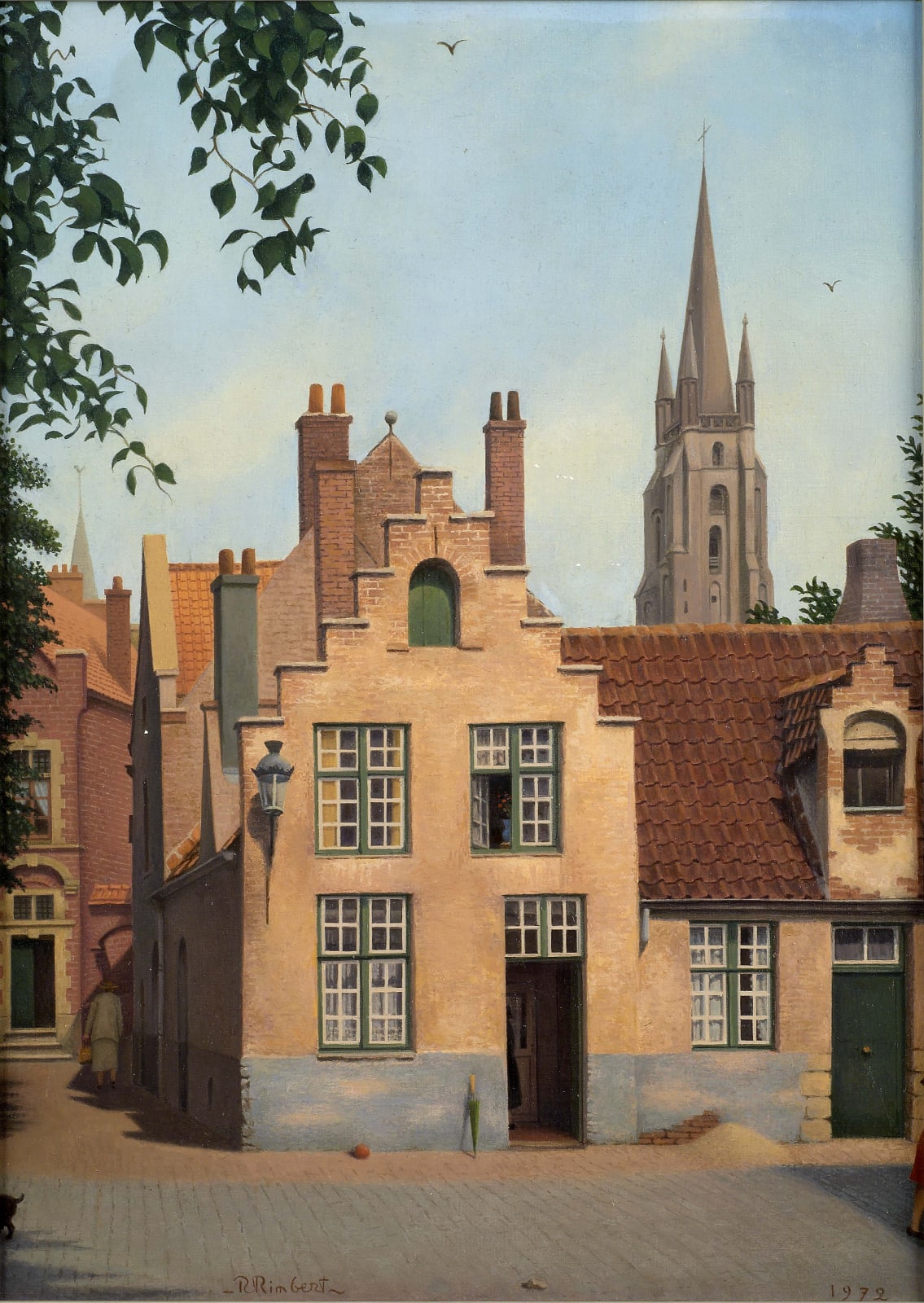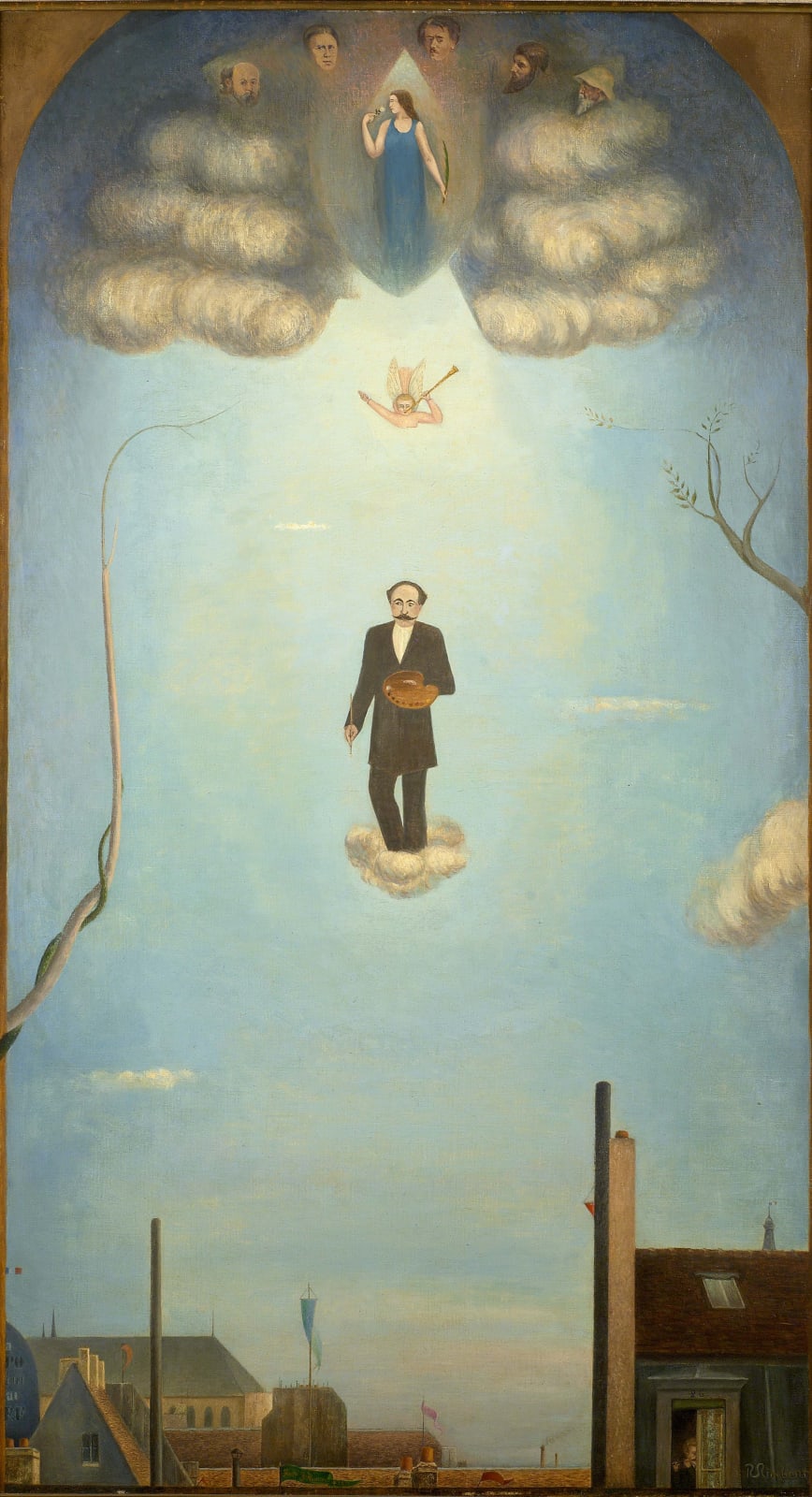René Rimbert: Poetry of the Silence and Flemish Reminiscences
Contrary to the oft-heard claim that every evolution progresses from the most simple to the most complex, Rimbert's pictorial production immediately appears as an enigma. This painter, without artifice, breaks the feeling of inertness to bring us the timeless. The quest of ideal and Beauty will be a permanent feature on Rimbert’s oeuvre. The preferred subjects of the artist −Still Life, city landscapes and interiors scenes − will be exhibited at AV Modern & Contemporary, this autumn, as poetical leitmotifs.
He has this other brave: to follow exclusively,
the eternal, the Beauty.”
Max Jacob (foreword), René Rimbert.
Exhibition catalogue, Percier gallery, 1927.
The quest for ideal and Beauty will be a permanent feature on Rimbert’s oeuvre. The preferred subjects of the artist −Still Life, city landscapes and interiors scenes − will be exhibited at AV Modern & Contemporary, this autumn, as poetical leitmotifs.
The Still Lifes, quintessential contemplative genre, are characterized by their wise compositions. The aesthetic representation of objects is settled down in the reality, as an antidote to the movements looking towards the abstraction. The artist resolves with dexterity the questions of colours and the light sources giving a charming rendering to the matter. The canvas entitled a Tribute to J.B. Siméon Chardin (1970), the great master of the Still Life, tells more of his predilection for this genre.
A peaceful atmosphere prevails in his compositions. Serenity is pervasive in the street scenes where seldom passers-by are bestowed with discretion and almost disappear in the corner painting. The daring framing surprises. Like a photographer, Rimbert captures the moment. The ephemeral becomes eternal. Thus activity turns into contemplation.
His artistic references are eclectic, ranging from the Flemish painting of the 17th Century to his contemporaries. The Vermeer evocation becomes explicit by the representation of the Girl with a pearl earring in some of his compositions. His fascination for the Delft School is to be felt even more in the attention paid to some of his themes such as in the Flemish Landscape (1972) by the light contrasts and the reduction of the narration in The Antique Dealer (1964).
The tribute to the Douanier Rousseau ascending to glory and reaching prosperity (1926) connects Rimbert to the artist by the search of intemporality as well as by his self-taught learning of painting. In 1926, this masterpiece was presented at the Salon des Indépendants in Paris, and will also be exhibited this autumn at the AV Modern & Contemporary in Geneva.
The urban views –the most representative artworks by Rimbert – will be exhibited in his retrospective. They are of a wise and linear construction, characterized by the handling of lights and shades and the picturesque and mysterious tones. It is with this genre that “Rimbert appears as a master. There is in the desert streets, in his Dead-end Street, an impressive silence, poetry without literature. Isn’t the sky of a miraculous purity? ...” Fierens, Journal des Débats, October 1928. That’s all Ariadne’s thread.
“So by a wonderful poet intuition, Max Jacob, 40 years ago, he had foreseen in Rimbert’s oeuvre what corresponds to his own deeper process. What if the poet wasn’t dead, there is no doubt that he will be always among the admirers of René Rimbert, admirers that I wish you to become in your turn.”
Jean Noël Priou in Arts P.T.T., n°41/1965






